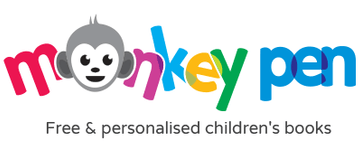Mixing and Blending: Advanced Coloring Techniques for Young Artists
Nov 14, 2025
Have you ever had the experience of seeing a coloring website and thinking, "I would like my image to be more captivating than the flat colors"? That's the reason blending is in the picture! Young artists who like coloring and want to expand their horizons by learning blending techniques, mastering the art of coloring can open a new level of imagination. These aren't simply fun tricks; they're advanced color techniques that can make your work appear more evocative, elegant, effortless, and professional. If you master the proper artist techniques, you'll go from filling up spaces to creating beautiful shading effects, real shadows, and eye-catching effects. Let's move your shading experience to the next step.
Understanding the basics of color mixing and Blending
Before you dive into complicated effects, it's helpful to know what we mean when we talk about mixing and color. Mixing colors refers to the process of combining two or more hues- either in your paint palette, or on the paper, to create new shades or hues. It is a smooth change between hues so that the eye perceives the gradual change rather than sharp lines. Imagine, for instance, that you have yellow and blue crayons. When you mix them, you are left with green. If you mix the blue with the yellow, you'll make a gentle green- yellow gradient. In the beginning, you might employ one color to create a sky; however, with blending, you could shift from a light-yellow close to the horizon to a deep orange over the top, making the image livelier. These effects are achieved with markers, pencils, crayons, or colored pencils. There are no fancy tools required, just a bit of patience and practice.
Blending Techniques for the Youngest Artists
Here are three techniques for blending that are perfect for developing artists:
1. Layering colors
Begin by lightly coloring the first color, then apply another color over it (or in the next step) as long as you keep the pressure low. The principle is to build gradually. For instance, you could color leaves with light green. Then apply a darker green on the shadow, and then return to the lighter green to smooth the edges.
Tip: Start by applying gentle pressure and gradually increase the pressure.
2. Gradient changes (light to dark, or one color into another)
Choose two colors, let's say purple and pink. In the middle of your paper, create some space for pink. You can then gently pull the purple in it, decreasing the tension as you go. This creates a smooth transition between pink and purple. It's like drawing the sunrise sky using pencils or coloring a bunny's fur so that the light side is lighter and the shadow side darker.
Tips: Use tiny circular motions or extremely gentle strokes. Avoid pressing immediately.
3. Blending tools
Based on your preferred medium, you could make use of:
- A "colorless blender" pencil (for colored pencils)
- An easy-to-use soft cloth or a cotton swab (for pastels or crayons)
- A mixing stump (for charcoal or pastels)
- These aid in smoothing the transition between different colors. They smooth the transition between colors, eliminating harsh lines and assisting the pigments "merge".
- Tips: Use the blender only after you've laid out the hues you'd like to use. This way, you're not erasing, but smoothing.
Advanced Coloring Skills: Moving It to the Next Level
Once you've mastered the basics and you are comfortable, you can push yourself with more advanced techniques:
A. Realistic highlights and shadows
Blending can showcase light falling onto the subject. For instance, the ball could be bright at the top, a mid-tone around it, and a darker shadow beneath. Start with your lighter color and then add middle tones, and finally the darkest shades. Blending can smooth the transitions so that the ball appears round, not flat.
Tip: Use a tiny white or very light spot to highlight- it helps the subject stand out!
B. Harmony of color and mood
Advanced coloring abilities also require selecting blends that feel right. Warm colors (reds and oranges, yellows) are energetic, while cool colors (blues and greens) are calm. Blending cool sunset with a warm sky (yellow, orange - red & purple) or an incredible underwater scene (turquoise blue - turquoise - dark blue). By blending your blends with care, you can give your work the mood.
Tips: Try a basic "warm" blend set and one "cool" blend set to see how they both feel.
C. Combining surprising colors to create curiosity
Don't be afraid of mixing colors that aren't commonly used together. For instance, you could mix deep violet into teal and olive green. These unintentional blends can result in an individual look and can allow you to develop your personal style. Experimentation is the central aspect of being a young artist.
Tip: Keep a "blend chart" (see the next section), and note which blends you like. Over time, you'll create your own set of preferred blends.
Practice Projects and techniques for young artists to explore
Let's get it done with these three projects that are fun to do:
Project 1: Blended Animal Fur or Sky
Choose an easy nature or landscape. Paint one side with lighter hues (for light) while the other with dark tones (for shadow). Use the blend device or light strokes to blend both zones seamlessly.
Project 2. Make a "Blend Chart"
Create a small grid made of boxes. In each box, select two colors and mix the two colors across each box, from right to left (colour A Mix - Color B). Each box should be labelled. In time, you'll have your own personal record of the way different colors blend. This is among the most effective techniques for young artists to develop their advanced capabilities.
Project 3: Texture and Blend Combo
Select a subject that has texture, such as fur, grass, or waves. Apply light strokes to create the texture (e.g., short flashes for grass) and then apply blending on top of the strokes- the result: texture and smooth color transitions- great practice for combining skills.
Encourage your young artist to have a sketchbook open. Consider these ideas and then reflect upon what works well and how to improve. Progress comes with reflection and practice.
Troubleshooting and Tips for Improving
Colorists at all levels face unique challenges when creating their art; here are some common issues and how you can overcome them:
- Colors appear muddy: This may be caused by pressing too hard or too soon, or combining incompatible colours too aggressively. Solution: Start light testing using scraps of paper. And then wash your pencil's tip between each colour.
- Lines that are too sharp between shades: If you detect a stark line, you can reduce your pressure and blend gently or employ a blender.
- Lack of vibrancy: Sometimes mixing may make colors dull if you overmix. To prevent this from happening, preserve an area of pure colour and blend around it instead of mixing everything to create grey tones.
- Schedule time: Block out 20-30 minutes at least once each week for mixing exercises. Make sure you have a separate sheet to use for "experimenting only" to allow you to fail and learn from mistakes.
Building confidence by Blending
Through exploring the blending technique of coloring, young artists are able to extend their palette beyond "just coloring within these lines". Advanced coloring techniques add an atmosphere, depth, and a personal look to their work. Utilising the techniques of young artists above- layering, gradient effects, mixing tools, imaginative colour mixing - they'll feel more comfortable and innovative on every colouring page or sketch.
Get your crayons or pencils. Choose two colors that you're not accustomed to mixing and attempt one of these projects this week. Be proud of the outcome, no matter how perfect or slightly messy it is. Every attempt will help you develop and improve your unique voice as an artist. At Monkey Pen, we have created a wonderful collection of preschool printable coloring pages and free coloring book pages for your munchkins. Select from the wide variety: start blending colors and shading the pictures with their favourite coloring books. The website also offers various educational resources, including posters, children's books, and dot-to-dot workbooks. All are available in PDF format at absolutely no cost.
Happy coloring and happy mixing!


